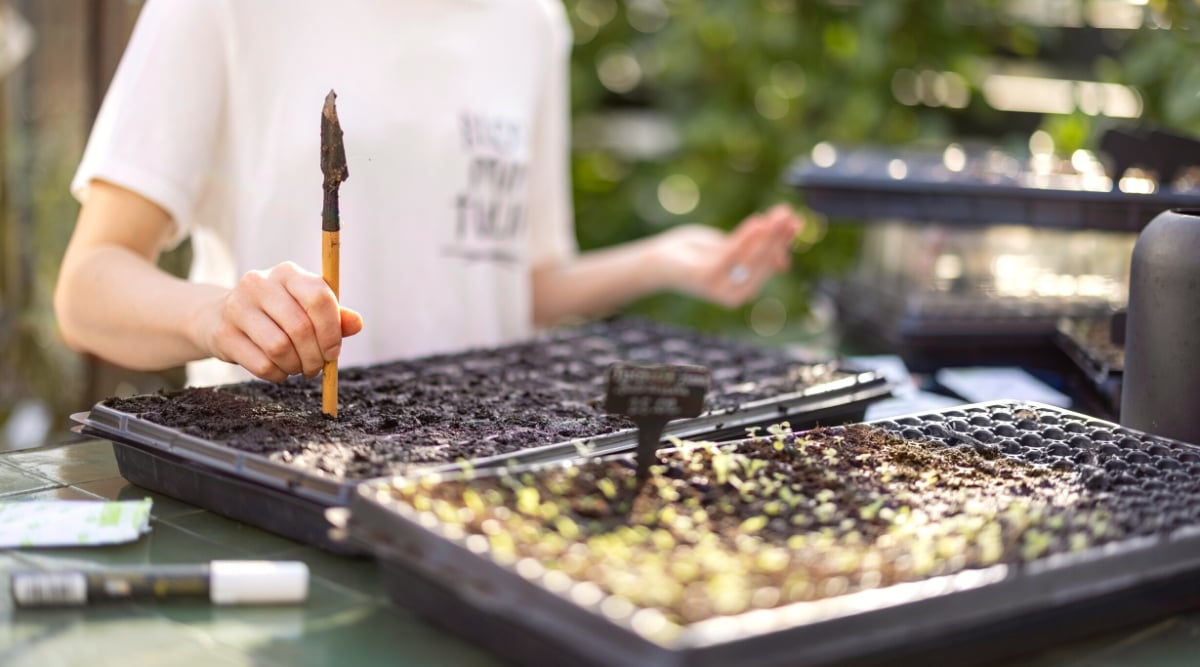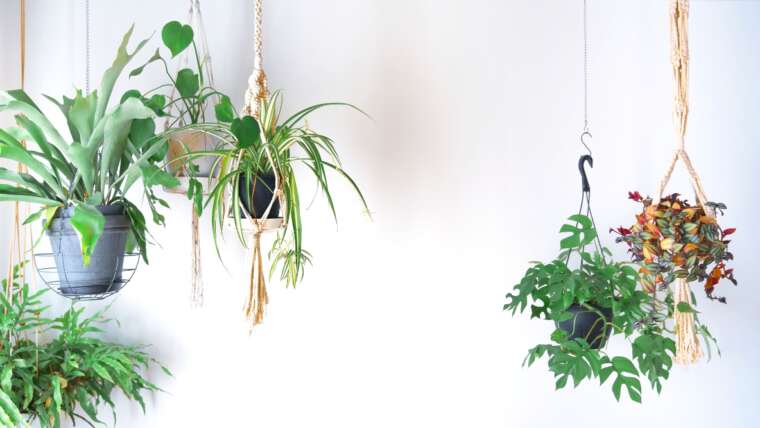When you ask gardeners what their dream garden looks like, their answer likely involves a greenhouse. These classic structures open up a world of growing possibilities, especially for those in colder climates. From lush tropical plants to effortless seed starting, there are many reasons to buy one.
Unfortunately, many gardeners assume owning their own is out of reach, whether due to budget or space constraints. But with proper planning and some expert tips, that doesn’t have to be the case.
Whether you’ve always wanted a greenhouse or are already considering taking the plunge, these are the things you need to know before you get started.
What Is A Greenhouse?
A greenhouse is an enclosed structure that controls temperature and other environmental conditions. This allows gardeners to grow tender plants without fear of the impacts of extreme temperature fluctuations (usually excessive cold, but also excessive heat).
These structures are usually made of metal or wood frames fitted with glass. Plastic and fiberglass are also used and are typically less costly. By letting plenty of sunlight in and retaining the heat, these structures create the ideal conditions for the growth of many plants – even in fall and winter.
What Are The Benefits?
You can extend your growing season and have a wider range of plant choices.
The main benefit of buying a greenhouse is inherent in its purpose – climate control. For those in cooler zones, the growing season may be unsatisfyingly short. It limits what you can grow, depending on the temperatures in your area.
With a greenhouse, you get to throw those concerns out the window. Warm-season plants remain protected from cold snaps, allowing you to grow whatever your heart desires without worry. You can also grow slightly out of season or extend your season by moving container plants in and out.
You won’t only expand the variety of plants you can grow, but the plants you choose will also generally grow better than outdoors. A controlled environment with plenty of light and heat provides the ideal conditions for rapid growth and can even improve germination rates when starting seeds.
Last but not least, you can’t ignore the aesthetic benefits. A greenhouse full of lush plants is a stunning addition to any garden, especially in cooler months when the rest of the garden slows down.
With careful design and placement, it’s bound to become your favorite outdoor retreat at all times of the year.
7 Things To Know Before Buying
Before you start dreaming about all the new plants you can grow, there are some vital points to consider in designing, installing, and maintaining.
Placement Is Vital
 Choose your location thoughtfully and consider lighting conditions, accessibility, and sun exposure.
Choose your location thoughtfully and consider lighting conditions, accessibility, and sun exposure.
Location influences how much you’ll be able to use it and how effectively it will boost plant growth. As with anything in the garden, positioning according to lighting conditions and accessibility should come first before breaking ground.
Although it may seem easier to install a greenhouse in part of your garden that goes unused, it’s far better to place it in the center of the action. Keep it close to your home to make it easier to reach, and make sure it’s easy to get in and out of to limit obstacles to use. The more accessible it is, the more you will get out of it.
You also need to consider the position of the sun when choosing placement. A spot with full sun for most of the day will ensure temperatures stay warm inside and that any light-loving plants receive the sunlight they need to grow to their full potential.
Consider how the sun moves throughout the day and between seasons to choose the perfect spot.
Build A Foundation
 To avoid structural issues, a proper foundation is crucial.
To avoid structural issues, a proper foundation is crucial.
As a permanent structure in your garden, proper foundations are essential. You don’t want to install your greenhouse only to encounter structural issues that require starting over again.
Greenhouses can be heavy, so placing them directly on soft soil is not a good idea. There are several ways to build a solid foundation, depending on the weight of the structure and materials used. But you definitely can’t skip the foundation process altogether.
The first step is to ensure the ground is level. Grading the soil will give you a clean slate to lay a foundation of wood or brick. For larger structures, it may be better to dig in your foundations and lay concrete to avoid damage down the line.
Always check the levels and stability first before you start any build. Extra preparation and care may be an additional chore, but it will lead to far fewer headaches after installation.
Customize The Space
 Depending on its purpose, you can customize the interior with surfaces for seed starting, potting benches, or open ground space.
Depending on its purpose, you can customize the interior with surfaces for seed starting, potting benches, or open ground space.
The design possibilities are almost limitless, especially for DIY lovers building from scratch themselves. But when considering the exterior design, don’t forget to consider the interior too.
Your greenhouse is a blank slate that can be filled with almost anything, depending on what you want to use it for.
If you use it primarily for seed starting, you’ll need to install surfaces to keep your trays on. For potting, you may want to include a potting bench with some shelving to store your supplies. One of my favorite uses is growing small fruit trees in containers, requiring open ground space and additional height to maximize growing potential.
For a high-tech version, you can install electricity and water outlets if placed close enough to your home. Add lighting for evening pruning sessions, overhead sprinklers for easy watering, or even a couple of speakers for music lovers.
Don’t Forget Temperature Control
 Monitoring with a thermometer and using vents to release warm air can help maintain optimal conditions for your plants.
Monitoring with a thermometer and using vents to release warm air can help maintain optimal conditions for your plants.
Greenhouses are designed to keep heat in and are incredibly effective at their jobs. In fact, they’re so effective that it can become overwhelmingly hot inside in summer – too hot for both you and your plants.
That’s why it’s important to consider temperature and environmental control when you buy a greenhouse. Providing an outlet for hot air to escape will help cool it down on scorching days, saving your plants from extreme temperatures.
Start by installing a thermometer to help you monitor temperatures. This indicates when it’s time to use the cooling measures available.
The simplest environmental control option is vents. When placed near the ceiling, these can be opened and closed as necessary to release warm air and bring the interior temperatures down. You can also install vents or windows that open automatically using a piston when temperatures increase dramatically.
Install a thermostat and exhaust fan system to level up your temperature control. Once the temperature reaches a certain threshold, it will trigger vents to open and the exhaust fan to switch on, removing the hot air.
It’s also possible to add air conditioners to provide short-term reprieves during warm weather, although during peak summer, they will likely be overtaxed and may not be as beneficial as a good venting system.
Expand Your Growing Possibilities
 Expand your plant choices, especially for unique and tropical species.
Expand your plant choices, especially for unique and tropical species.
If you haven’t had the opportunity to grow something because your climate isn’t quite right for it, a greenhouse is the answer. While the increased choice is often overwhelming, this is your chance to grow unique, rare, and tender plants that you wouldn’t be able to otherwise.
Greenhouses are ideal for tropical plants, maintaining the high temperatures and humidity they prefer. Try growing everything from rare houseplants to tropical spices like ginger and curry leaf, even if you live in a cooler USDA Zone.
Although you may be primarily buying one for starting seeds (as we’ll look at next), don’t forget to add a few experiments you’ve always wanted to try growing to make the most of the space.
Start Seeds Successfully
 Enhanced conditions that improve germination and growth will facilitate seed starting.
Enhanced conditions that improve germination and growth will facilitate seed starting.
Greenhouses are incredibly popular for seed starting, and for good reason. The extra warmth and humidity boost germination and promote quick root growth, greatly increasing your chances of seed-sowing success.
I live in a warm climate where seed starting is not usually an issue. However, I still like to keep my seed trays inside my small greenhouse until they can be transplanted. Not only do more seeds germinate, but growth is also better, and I find the plants produced are far more vigorous than they would be if I kept them out in the open.
You can also extend your season by starting seeds early. Many seeds can be sown a few weeks before their intended planting date as long as they are protected from cold temperatures. For those growing edibles, a few extra weeks head start can make a world of difference.
They Aren’t As Pricey As You Think
 Budget-friendly options are available, even for smaller spaces.
Budget-friendly options are available, even for smaller spaces.
The final thing to know is probably the most important if you’re still on the fence about buying a greenhouse – they aren’t as expensive as you may think.
Considering they are permanent structures usually built with glass, it’s easy to assume this dream is out of your budget. And don’t get me wrong, intricate greenhouses fitted with all the gadgets can come with a high price tag. But the good news is, they don’t have to.
Companies like BC Greenhouse Builders offer a wide range of solutions for every gardener and every space. Whether you’re looking for a completely customized build or something quick and simple, there are options that will fit your budget without breaking the bank.
They don’t have to take up too much space, either. Mine is just six feet wide and eight feet long, but I was surprised at how much I could grow in a small space. Changing up sizing and materials is a great way to reduce expenses, bringing your greenhouse dreams within reach.
Final Thoughts
A greenhouse may seem like a garden addition reserved for only the most committed growers, but tons of benefits make installing one worthwhile for every gardener.




